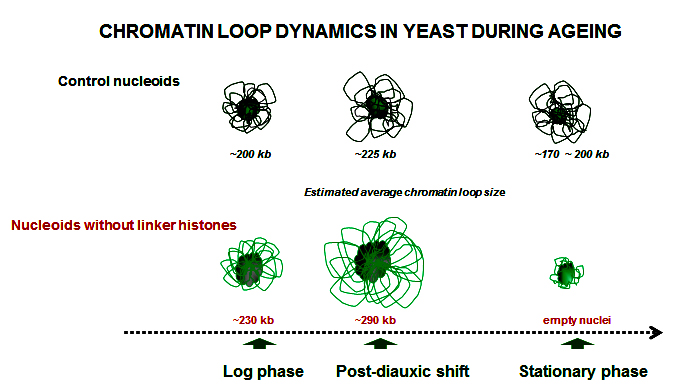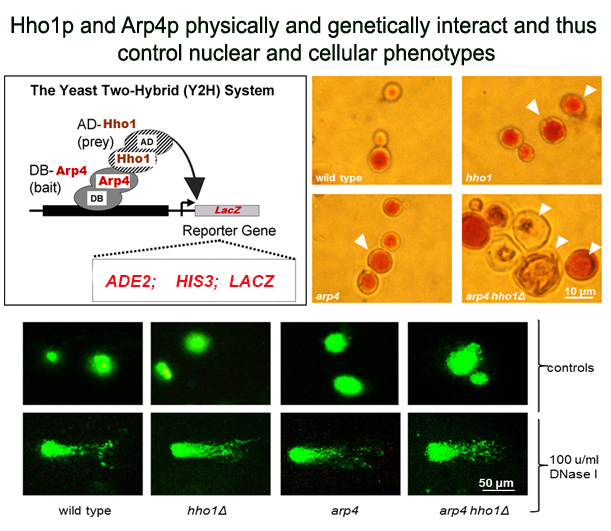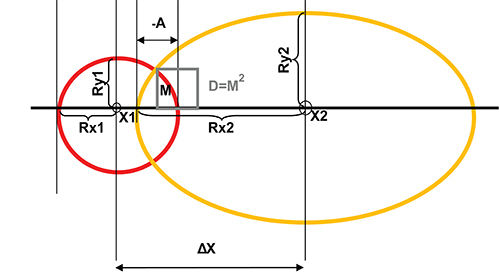Research
Intro
The whole spectrum of molecular processes and events such as gene activity, DNA replication and repair that occur in the nucleus can not be understood without deep knowledge on the structural packaging of DNA. In the cell nucleus DNA is compacted with proteins in an intricate DNA-protein complex called chromatin. A large body of evidence exists showing that chromatin is in the center of the epigenetic inheritance and therefore epigenetics is a form of genome regulation by chromatin. In other words, activity of the genes deeply relies on the way in which DNA is packaged with chromatin proteins. By recently developed methods, such as Chromatin Immuno-Precipitation (ChIP), 3C and its modifications, etc., data have been accumulated that better explain chromatin structural dynamics. Mainly, chromatin is composed of DNA and five histone protein species. The four core histones H2A, H2B, H3 and H4 through their post-translational modifications play important roles in the regulation of genes. The fifth histone – the linker histone H1 is special, because it is involved in the organization and maintenance of the higher-order chromatin structures. Therefore, histone H1 is profoundly implicated in the fine regulation of genome stability and activity. Recently collected data argue that the higher order structuring of chromatin is very important for genome activity because it is evolutionary preserved from the single eukaryotes as yeasts to the most complicated species such as humans. Thus, apparently the position of the linker histone H1 is crucial for the protection, function and evolution of the eukaryotic genome.
Laboratory objectives
Laboratory of Yeast Molecular Genetics
(LYMG) is thoroughly involved in studies of the epigenetic mechanisms that govern chromatin structural organization and dynamics. The work in the lab is centered mainly on the linker histones, higher-order chromatin structures and nuclear organization, sensu stricto - Epigenetics. It should be emphasized that research in the laboratory is always designed and performed in order to gain knowledge about very complex cellular processes as differentiation, malignant transformation, cancer, gametogenesis and ageing. To approach and answer how these processes occur in norm and pathology a large number of methods and techniques are in regular use at LYMG, including standard and novel methods for contemporary chromatin studies. In addition, the team is actively involved in the design and development of new methods and modifications for high-resolution chromatin studies. Among them are Chromatin Comet Assay (ChCA), Immuno-Comet Assay and the specialized software for comet analysis
CometShape
.
The model organisms that are used in the laboratory work include classical models – yeasts, cell cultures, Drosophila, mice, rats, rabbits, Arabidopsis, but also specimens taken from the nature – plants (dandelion, pea, oak) or biopsies from human tumours (Glioblastoma multiforme), or patients with autoimmune disorders or other pathologies.
Altogether, LYMG is performing cutting-edge research in a large spectrum of scientific fields like Molecular genetics, Biomedicine, Ecology, Pharmacology, In vitro insemination etc.
A gallery of images representing some of YMGL scientific achievements is shown below:
1. The analysis of the global chromatin organization during cellular ageing demonstrated certain loss of the upper levels of chromatin compaction which was most pronounced in the cells without a linker histone

2. Saccharomyces cerevisiae linker histone physically interacts with Arp4p (actin-related protein 4) which is a key subunit of three chromatin modifying complexes - INO80, SWR1 and NuA4. A single - point mutation in the actin - fold domain of Arp4p together with the knock-out of the gene for the linker histone in S. cerevisiae severely abrogates cellular and nuclear morphology and leads to complete disorganizing of the higher levels of chromatin organization

3. "CometShape" software allows easy discrimination among different genotoxins depending on the type of DNA damage they induce
